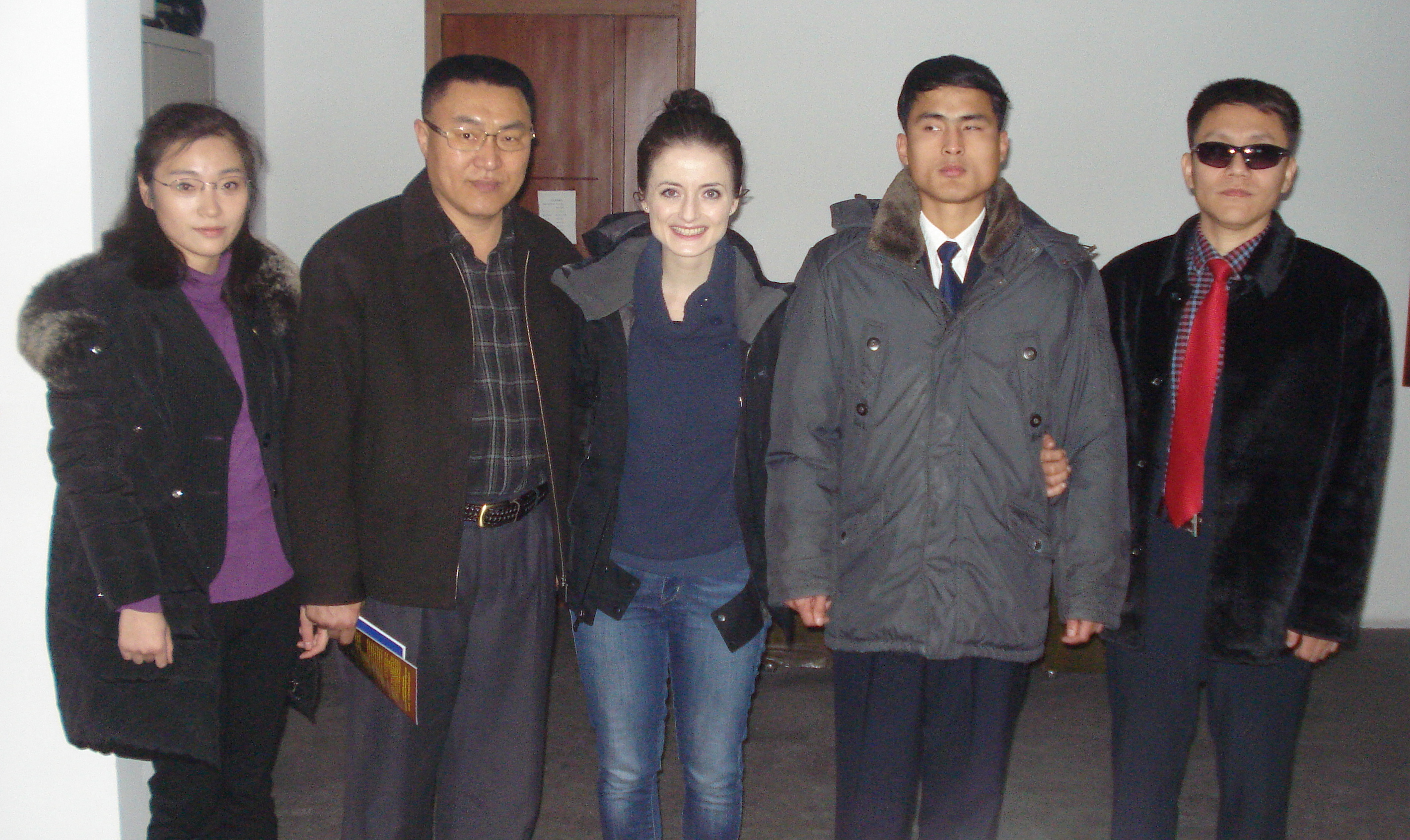Disability & Technology in the DPRK
Vision Impairment
The Korea Economic and Cultural Centre for Deaf and Blind (KECCDB) in Pyongyang
The Korean Economic and Cultural Centre for Deaf and Blind (KECCDB) [22] is a unique deaf and blind-concerned organisation, which aim is to improve economic and cultural activities of the deaf and blind people in the DPRK. The KECCDB was established in December 2012 as an affiliated body of the Korean Federation for Protection of the Disabled (KFPD), and includes several sub-organisations, such as the Blind Association of Korea (BAK), Deaf Association of Korea (DAK), Deaf Football Korea (DFK), and Wood-processing Workshop of the Deaf (WPWD). It also facilitates a deaf kindergarten, provides sign language interpreters’ course, and coordinates all deaf- and blind-concerned affairs in the DPRK.[22]

Meeting with BAK and DAK representatives; KECCDB, Moranbong district, Pyongyang, DPRK; Nov 2018
Digital Braille Typer; KECCDB, Moranbong district, Pyongyang, DPRK; Nov 2018
Digital Braille Typer and Printer; KECCDB, Moranbong district, Pyongyang, DPRK; Nov 2018
Kwangmyong Printing House for Blind People in North Hwanghae Province
Kwangmyong Printing House has been a unique and the main producer of the written text in the Braille language for blind and visually impaired people in the DPRK since February 1962. In contrast to a digital Braille printing system used by the KECCDB in the Capital City of Pyongyang (as above), Kyongmyong Printing House preserves and follows a traditional 10-step manual publishing process in the Braille language, allowing to produce around 10,000 books per year. However, taking into account an accelerating digitalisation process and growing entrepreneurship ecosystem in the DPRK [21], it is believed the Kwangmyong Printing House could be modernised and introduced with digital printers to meet an increasing demand for books in the Braille language in the country.
Braille text proof-reading; Sungho county, North Hwanghae province, DPRK; Dec 2018
Braille text proof-reading; Sungho county, North Hwanghae province, DPRK; Dec 2018
Braille text printer; Sungho county, North Hwanghae province, DPRK; Dec 2018
Braille text end-product; Sungho county, North Hwanghae province, DPRK; Dec 2018
Hearing Impairment
Like most of foreign languages, learning the sign language requires time, discipline, and self-determination. It also needs some technical guidance provided by a sign language instructor, especially in the early stages of learning the language. However, taking into account that the specialist schools in the DPRK are not compulsory and not all deaf children can attend them from the logistic point of view, it is believed that the assistive technology could be a solution here. Additionally, knowing that digitalisation is making headway in the DPRK and as many as 6 million North Korean people (one quarter of the entire population in the DPRK) have already got a smartphone [21], makes specialist mobile applications turning real-word speech into captions (so-called ‘Life Transcribe’) in high demand.
The Korea Economic and Cultural Centre for Deaf and Blind (KECCDB) in Pyongyang
Sign language alphabet; KECCDB, Moranbong district, Pyongyang, DPRK; Dec 2018
Visit to the School for Deaf Children; Moranbong district, Pyongyang, DPRK; Dec 2018
Visit to the School for Deaf Children; Moranbong district, Pyongyang, DPRK; Dec 2018
Sambong School for Deaf in Onsong County since 1958
Visit to the School for Deaf People; Onsong, Onsong county, North Hamgyong province, DPRK; Dec 2018
Visit to the School for Deaf People; Onsong, Onsong county, North Hamgyong province, DPRK; Dec 2018
Visit to the School for Deaf People; Onsong, Onsong county, North Hamgyong province, DPRK; Dec 2018